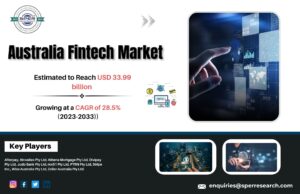Life science software includes a range of tools for standardizing workflow and document management in the biopharmaceutical, medical technology, generics, and clinical care sectors. These programs allow businesses to capture, store, and preserve data using images and text. There are various types of life science software available, such as drug identification and validation, laboratory management, clinical trial management, and medical device development.
According to SPER market research, ‘Life Science Software Market – By Type, By Application, By Component, By Solution- Regional Outlook, Competitive Strategies and Segment Forecast to 2033’ state that the Global Life Science Software Market is predicted to reach USD 64.71 billion by 2033 with a CAGR of 13.11%.
The development of analytical solutions has greatly benefited the global life sciences sector. Emerging technologies, such as AI, have the potential to significantly improve and accelerate drug discovery. Additionally, AI-powered life science analytics tools help with novel medication research and development, drug repurposing, increasing pharmaceutical productivity, and other tasks. Furthermore, AI technology reduces human workload, eliminates human error, and enables the achievement of goals in a short period. As a result, key companies in the market are forming effective strategic alliances to gain a dominant position in the market, which may have a positive impact on the global market.
Nonetheless, despite the well-known benefits of software in the life science industry, the high implementation and subscription/licensing fees for advanced analytics solutions are a significant barrier due to budget constraints faced by many pharmaceutical companies and other stakeholders. Only top-tier companies have the capability and funding to effectively use big data to deliver actionable insights. Furthermore, these solutions are prohibitively expensive for small and medium-sized pharmaceutical and biotechnology companies, as well as CROs with limited budgets, limiting their adoption. This trend is especially noticeable in emerging economies, where it is always difficult to obtain budgets for IT over medical equipment.
Request For Free Sample Report @ https://www.sperresearch.com/report-store/life-science-software-market.aspx?sample=1
Furthermore, the global market for life science software has been significantly affected by the COVID-19 pandemic. Because of the urgency of developing treatments and vaccines for the virus, there is an increased demand for software solutions that aid in drug discovery, genomics, and clinical trials. The ban on in-person meetings necessitated remote work and collaboration tools, hastening the adoption of cloud-based platforms and online collaboration tools. However, disruptions in the supply chain made it more difficult for businesses to obtain the software licenses and hardware components they required.
Life Science Software Market Key Players:
Geographically, North America dominates the life science software market due to increased adoption of cutting-edge technologies and a large share of investments. Because of the increasing digitization of healthcare-related work processes and the presence of major healthcare firms implementing this software in these regions, North America is the leading market in the life science software industry. It is expected to expand rapidly in the coming decade. Additionally, some of the market key players are ; Allscripts Healthcare LLC ,Cerner Corporation ,Cognizant ,CPSI ,Elinext ,EPIC Systems Corporation , INFOR ,Jag products LLC ,Meta, Oracle.
Global Life Science Software Market Segmentation:
The SPER Market Research report seeks to give market dynamics, demand, and supply forecasts for the years up to 2033. This report contains statistics on product type segment growth estimates and forecasts.
By Type: Based on the Type, Global Life Science Software Market is segmented as; Descriptive, Predictive and Prescriptive.
By Application: Based on the Application, Global Life Science Software Market is segmented as; Compliance, Marketing, R & D, Pharmacovigilance and SCM.
By Component: Based on the Component, Global Life Science Software Market is segmented as; Software and Services.
By Solutions: Based on the Solutions, Global Life Science Software Market is segmented as; Cloud- Based and On- Premises.
By Region: This research also includes data for North America, Asia-Pacific, Latin America, Middle East & Africa and Europe.
This study also encompasses various drivers and restraining factors of this market for the forecast period. Various growth opportunities are also discussed in the report.
For More Information, refer to below link:-
Life Science Software Market Future Outlook
Related Reports:
Follow Us –
LinkedIn | Instagram | Facebook | Twitter
Contact Us:
Sara Lopes, Business Consultant – USA
SPER Market Research
+1-347-460-2899



